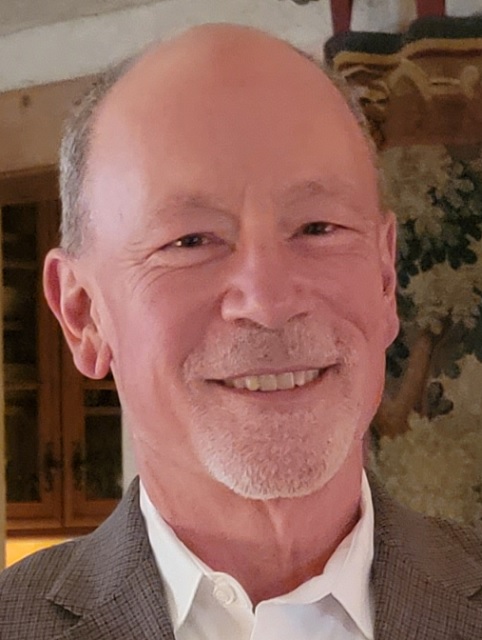EdgeBeam Wireless ATSC 3.0 Datacasting Hits the Ground Running
Thanks to preliminary work by its joint venture partners, JV predicts first revenue this year

It’s still early days for EdgeBeam Wireless, the joint venture of E.W. Scripps Co., Sinclair, Gray Media and Nexstar Media Group aiming to deliver datacasting service nationwide via ATSC 3.0, but that does not mean the new company is starting from a standstill.
While EdgeBeam interviews prospective CEOs and begins putting in place a sales organization, customer service and other essential personnel, it enters the business of delivering wireless IP data with the seeds BitPath and OTA Wireless have sown by developing prospects and customers beginning to sprout, Sinclair President and CEO Chris Ripley said.
BitPath, a spectrum consortium of Sinclair and Nexstar, as well as the Scripps-Nexstar OTA Wireless joint venture, will be folded into EdgeBeam along with customers and relationships already under development. “BitPath is already signing up trial customers for enhanced GPS,” Ripley said. “That’s a product in flight.
“Streaming offload and automotive connectivity, those are efforts that are already in flight but at the various EdgeBeam partner companies, and those are being contributed as well,” he said. “So, although EdgeBeam is sort of booting up and hiring people, it’s going to be a warm handoff of these activities.”

Launching the joint venture with the backing of these major broadcast groups to make 3.0-based datacasting a commercial enterprise is a positive development for the broadcast industry, said Rick Ducey, managing director of BIA Advisory Services.
“It’s encouraging to see these kinds of commitments by four companies to work together to try to develop this datacasting space for the industry and have a new revenue stream that complements advertising and maybe replaces retransmission,” Ducey said. “It’s a place they have to go.”
EdgeBeam makes it easier for data customers to transact with broadcasters because it will offer a central point of contact to access broadcast spectrum for data delivery, Scripps President and CEO Adam Symson said.
Get the TV Tech Newsletter
The professional video industry's #1 source for news, trends and product and tech information. Sign up below.
“We as individuals [the four station groups] spent some time developing industry relationships, and what became very clear was that on the buy side of the data services business, they want to be able to have one conversation with an agent in order to reach customers across the country,” Symson said.
“The fragmented nature of the broadcast business precluded that kind of success. So, creating this joint venture allows this company to serve the marketplace in the way that the marketplace deserves to be served.”
Strength In Numbers
At its launch last week, EdgeBeam Wireless noted the combined footprint of the four station groups exceeds 90% of the United States. As of this writing, 76% of Nielsen households are covered by a NextGen TV signal.

“Whether or not all of that has been converted to ATSC 3.0 is beside the point because it will be,” said Symson, who added that the EdgeBeam launch comes at a time when Federal Communications Commission leadership will be changing, which may “catalyze the opportunity for the conversion to 3.0.”
Beyond the four station groups, the new joint venture will invite other broadcasters to come onboard by contributing spectrum for datacasting to fill out the network. At the moment, however, specifics of such arrangements are unavailable. “That’s going to be up to the EdgeBeam team to span out and sign up additional broadcasters,” Ripley said.
EdgeBeam offers its four joint venture founders and any other broadcaster choosing to join in a way to diversify revenue streams. A revenue scenario BIA released in November 2021 predicted that annual industry revenues could reach $6.4 billion by 2030, with an average utilization of 3 Megabits per second devoted to datacasting.
“With respect to the media marketplace and broadcasting, [diversifying revenue sources is] going to be critical if Americans want to maintain local journalism, local sports and localism,” Symson said. “It’s going to be critical that we be allowed to identify new ways for us to monetize our spectrum.”
But diversifying revenue sources promises to strengthen more than the bottom line. As incoming FCC chair Brendan Carr has raised the specter of a new incentive auction, taking steps to build the value of broadcast spectrum is a smart thing to do, Ripley said.
“If we're able to monetize the spectrum more effectively, provide value-added services to the consumers and create more competition within the wireless ecosystem, that is going to up the value of our spectrum,” he said.
“To the extent that we are successful in adding additional use cases to our spectrum through EdgeBeam, that will increase the value of our spectrum and therefore the threshold [price] broadcasters would be willing to accept in order to have to sell their spectrum.”
Service Details
At this point, many of the details, such as specific service pricing, what core network technology will be used to distribute data to the edge for transmission and what financial commitment each of the partners made to the joint venture are unknown.
What is known is that EdgeBeam Wireless is an independent organization, with a mission to create value through datacasting.
“For me, that was what I needed to see happen,” Symson said. “I didn’t want EdgeBeam to be encumbered by legacy thinking or by legacy risk profiles over different views on capital allocation.”
Pricing has not yet been determined; however, for many applications it will be less than the $1 to $2 per gigabit, which is common for wireless service, Ripley said.
At this point, it is unclear whether a single core broadcast network technology will be deployed to serve data streams to transmitters for distribution or a combination of technologies will be used. At last year’s NAB Show, Sinclair unveiled its Broadspan broadcast core network platform and has since deployed it. Others in the joint venture have deployed solutions from HPE, which in May 2024 announced its was divesting of its Communications Technology Group.

“The JV is in an evaluation period as to what technology to use,” Ripley said. “We’ll have to see whether we end up staying with a multi-technology situation, or we have one solution for everything. That’s to be determined.”
By early April at the NAB Show, Ripley is hopeful EdgeBeam will have its new management team in place and will be introducing itself and some of its products to the industry. Both Symson and Ripley are optimistic EdgeBeam will have its first paying customer before the end of the year, and possibly within months, they said.
That is a critical milestone for EdgeBeam and its partners, Ducey said. “Once it becomes material as a financial event, BIA and those in the station valuation business will start factoring it into our discounted cash flow models as will the equity analysts,” he said.
“They’ll say, ‘Oh, this is actual revenue coming in now. What’s the cost basis? What's the revenue? Is this scalable and sustainable? Is it recurring?’ Then they're going to start to adjust their models.”
Whether that creates higher spectrum value for an auction scenario or it simply creates greater shareholder value, adding a complementary revenue source strengthens broadcasters.
“All businesses need to continue to innovate and develop new revenue streams, and so do we,” Ripley said. “We had a great year. Our retrans continues to grow, and we’re growing core ad revenue.
“But if we don’t add another revenue stream, the industry is going to be in trouble longer-term. Having a new revenue streams and new growth opportunities in the hopper is what this is all about.”
(Editor’s note: Gray Media and Nexstar Media Group were contacted for comment but declined.)
Phil Kurz is a contributing editor to TV Tech. He has written about TV and video technology for more than 30 years and served as editor of three leading industry magazines. He earned a Bachelor of Journalism and a Master’s Degree in Journalism from the University of Missouri-Columbia School of Journalism.

